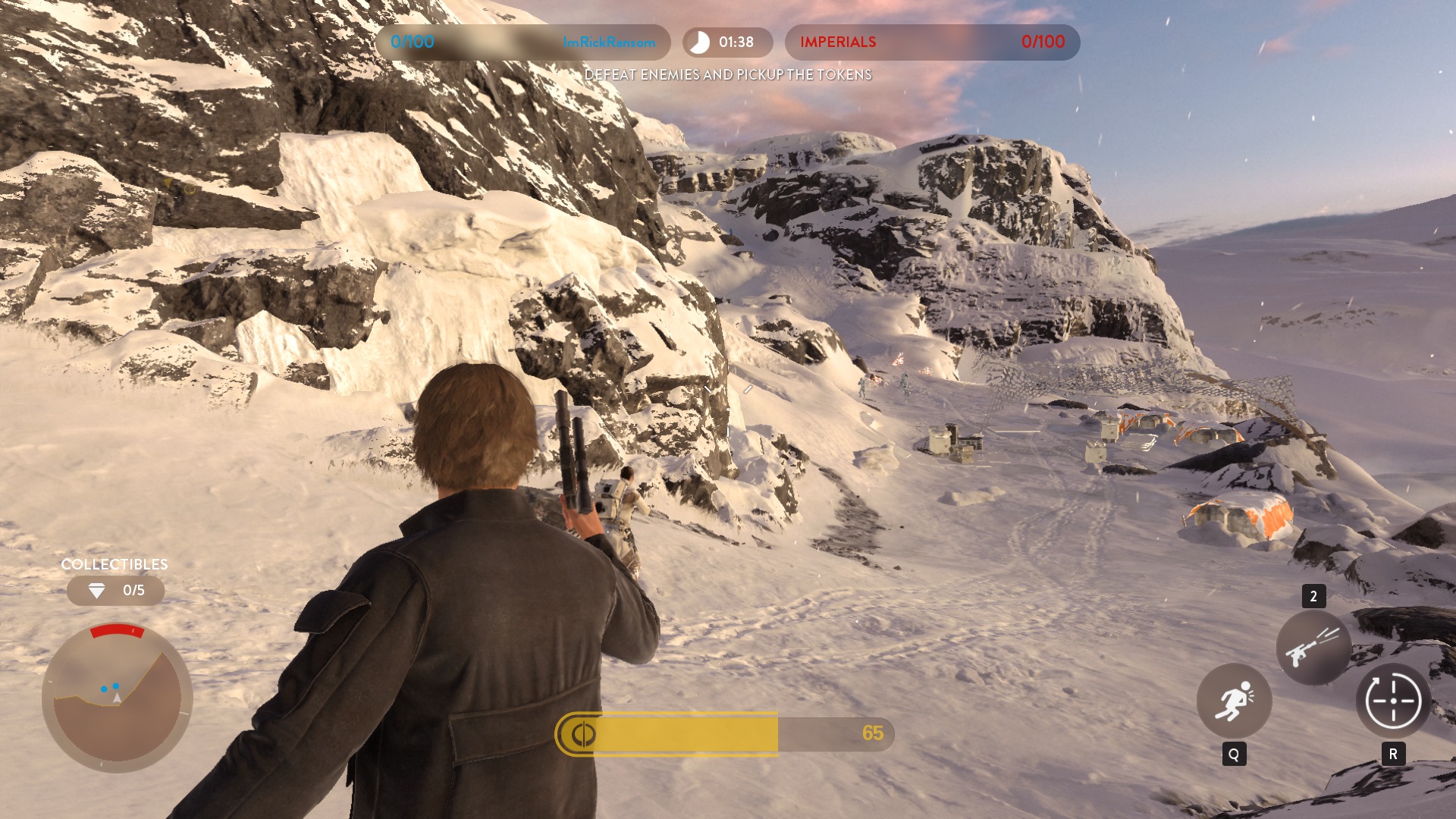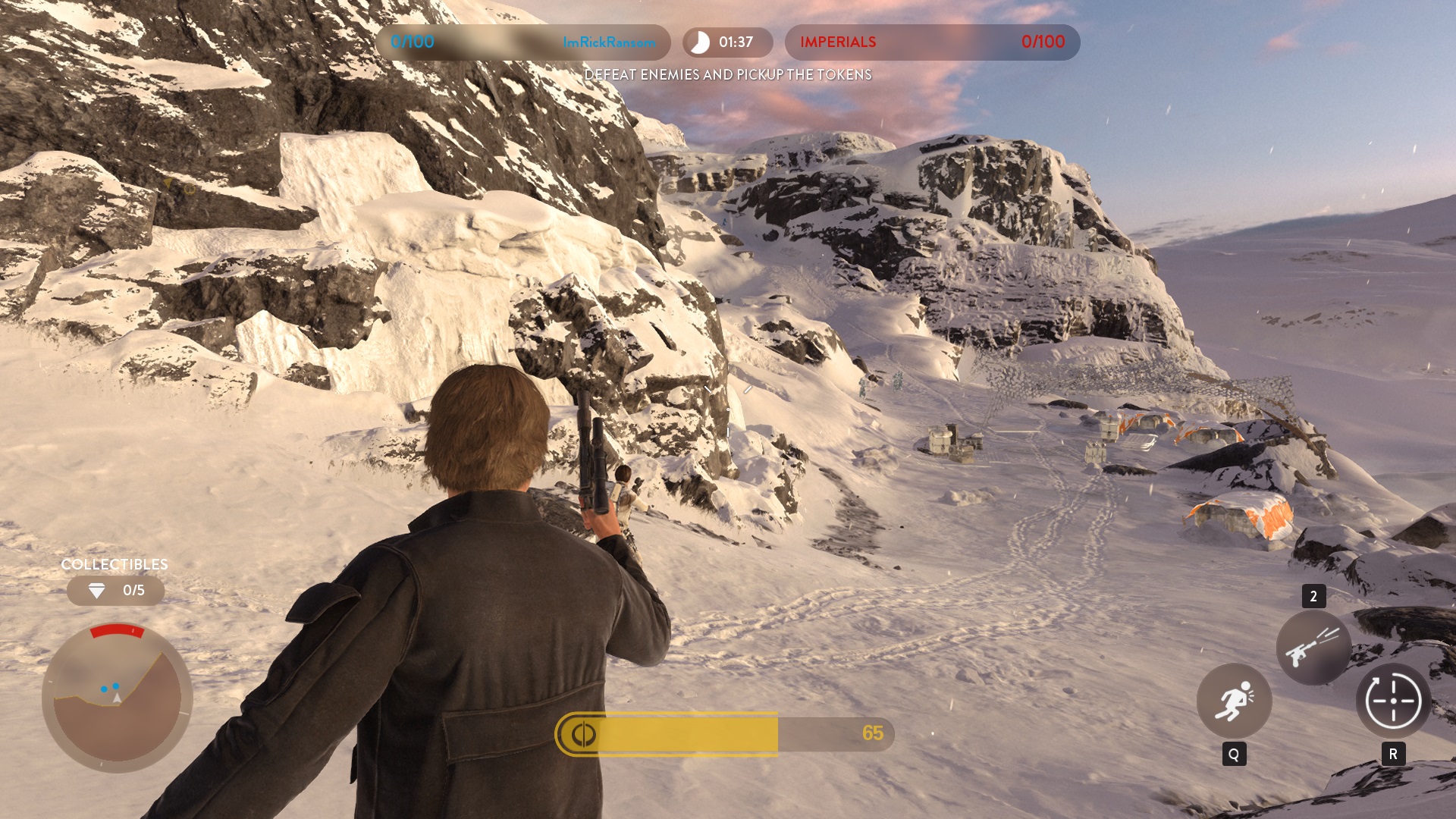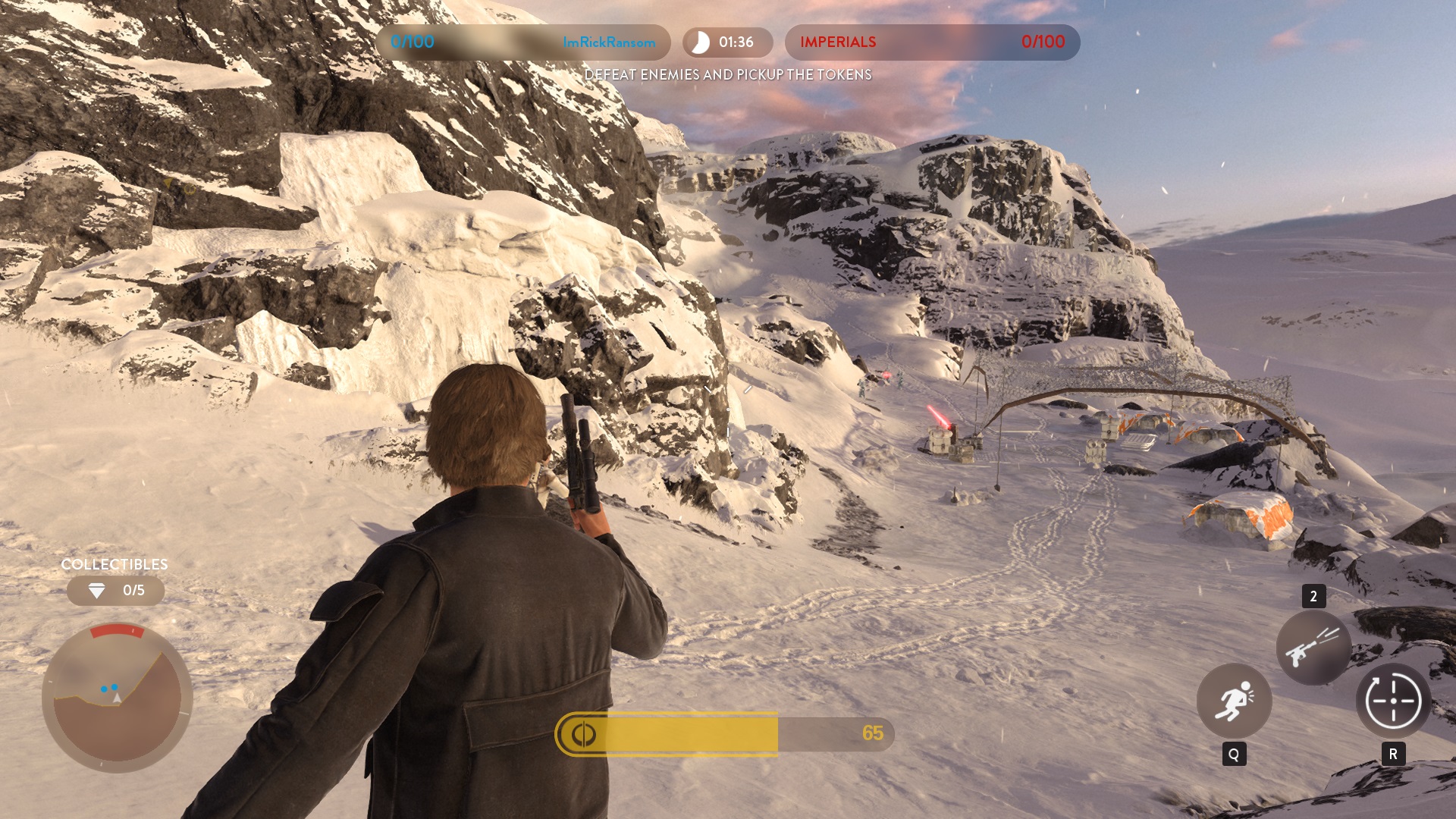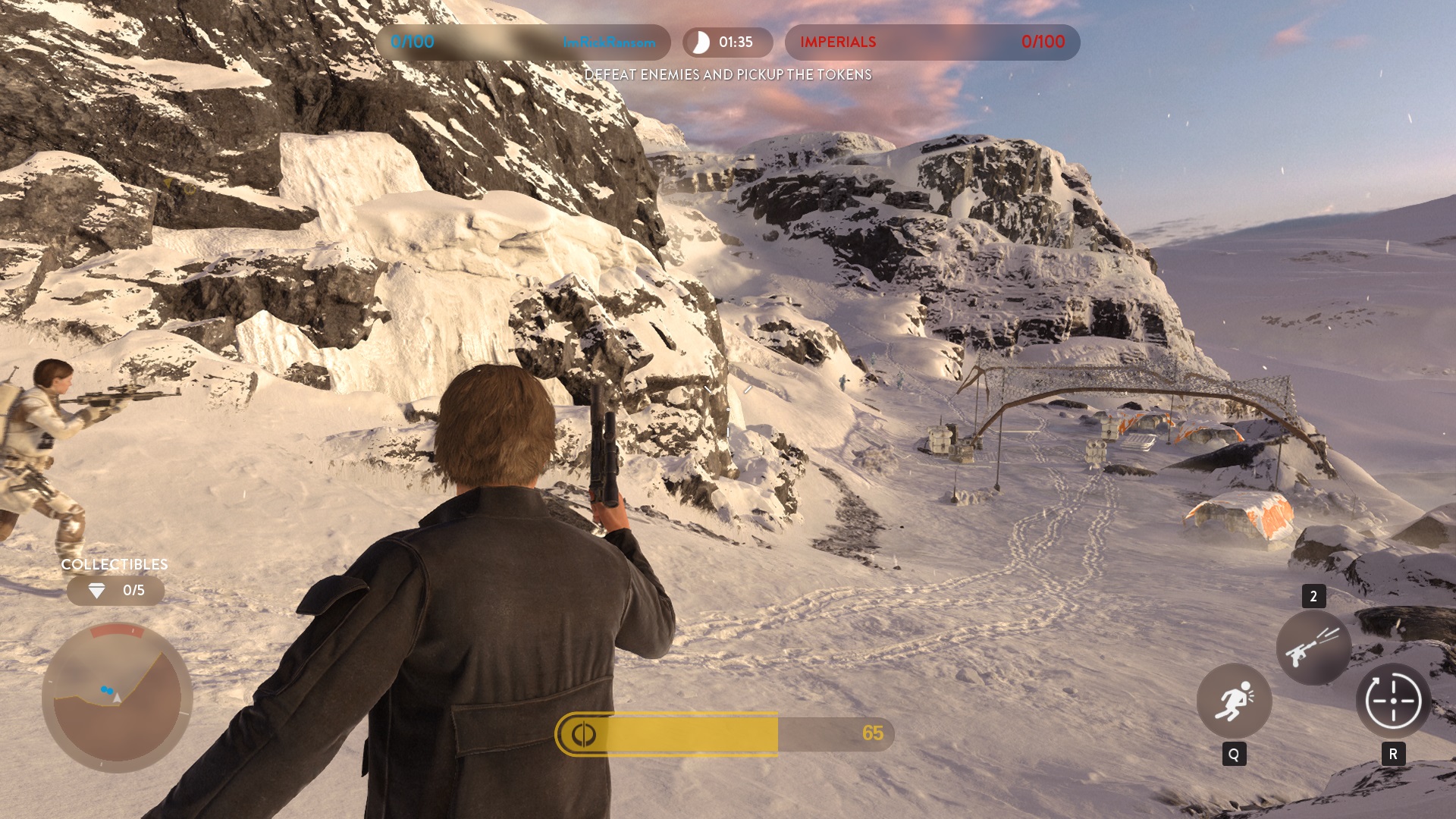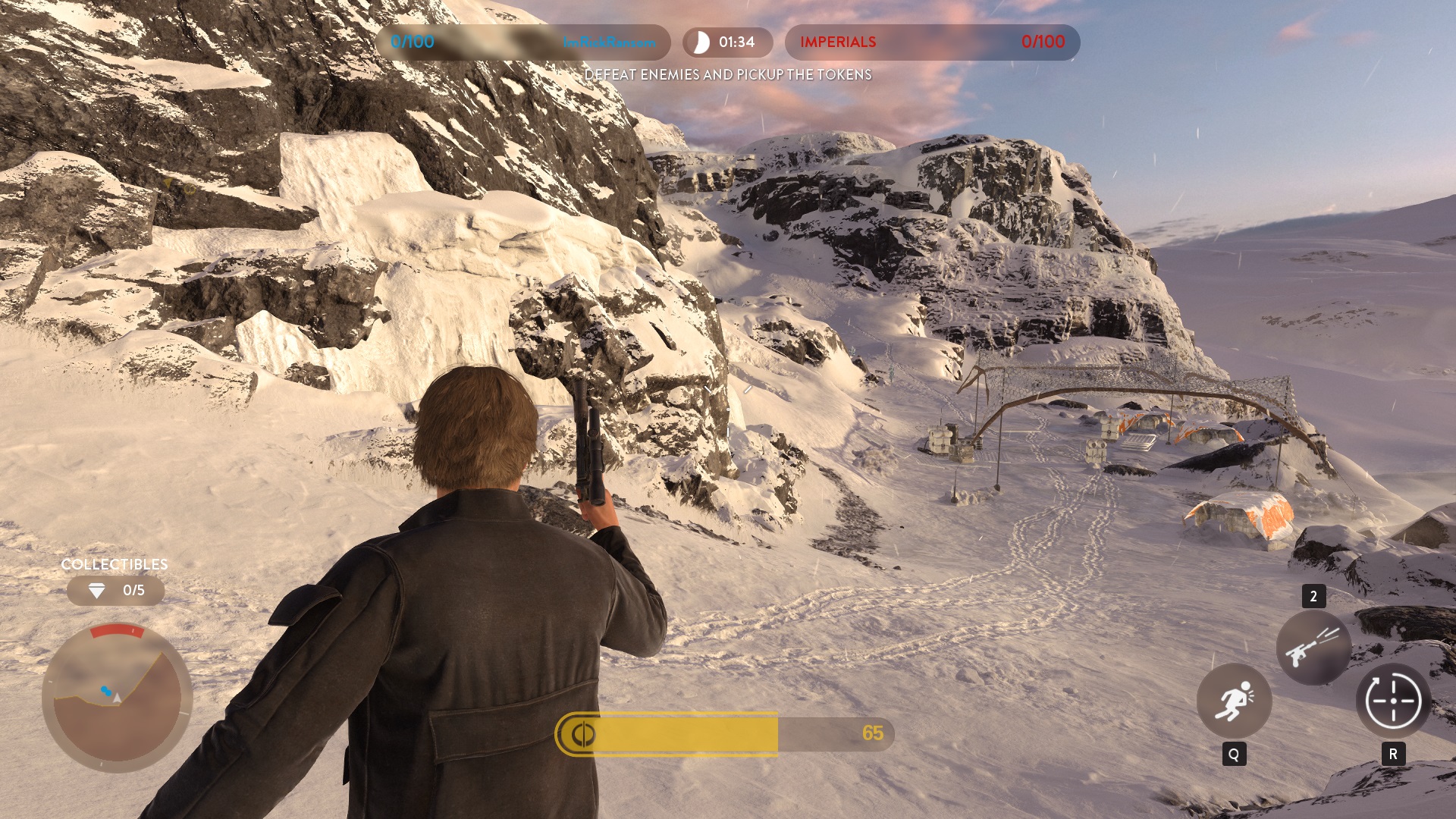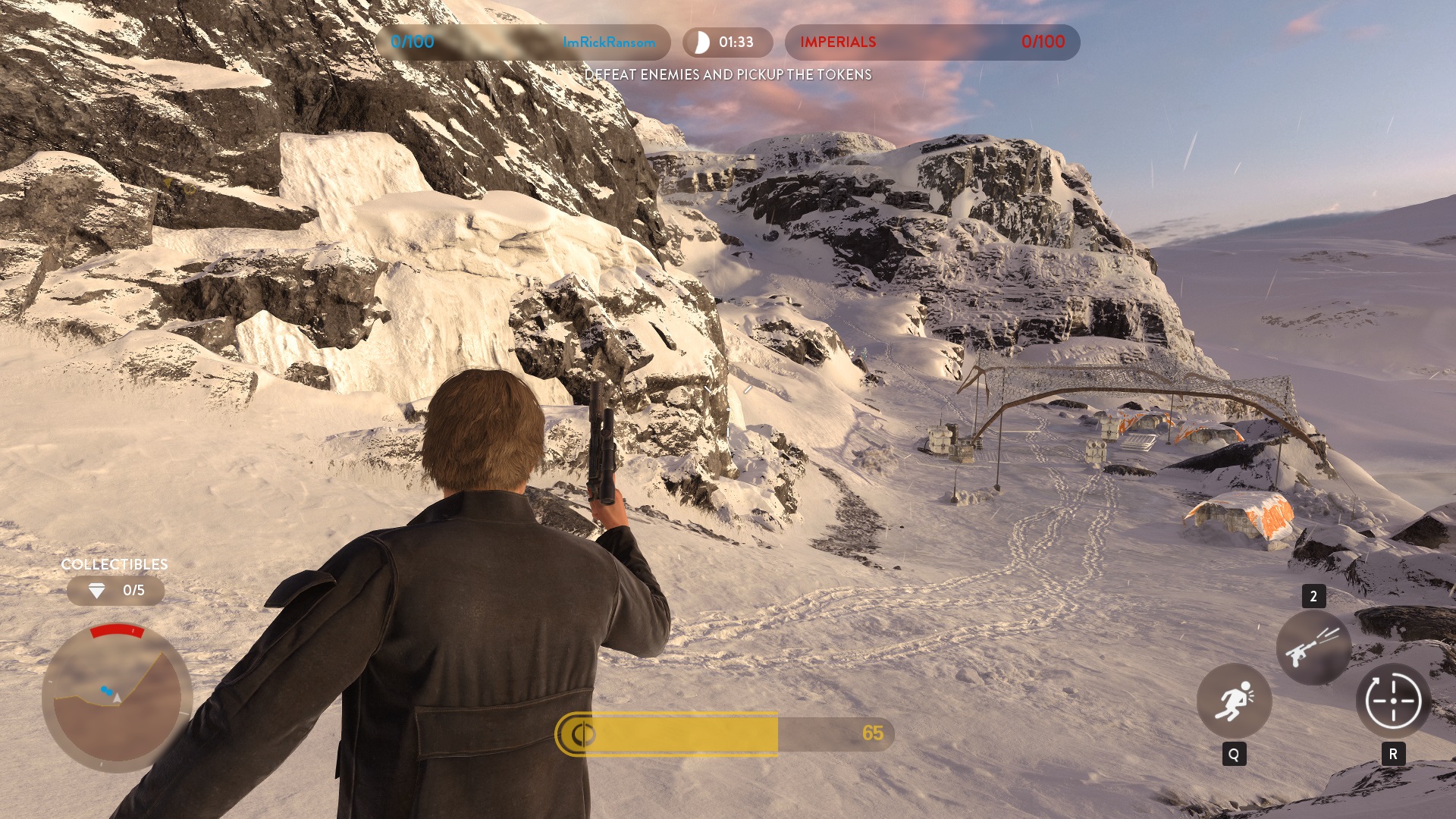
As usual, the PC enjoys the highest graphics fidelity. While the game only runs at 720p on Xbox One, and 900p on PlayStation 4, in order to achieve 60 frames per second, on PC the game can run at resolution up to 5K, or on a monitor with a 165Hz refresh rate.
But traveling through hyperspace to those high resolutions and refresh rates ain’t like dusting crops, farmboy. When it comes to smooth Battlefront performance on the PC, it’s either do, or do not. There is no try.
Nailing the look and feel of Star Wars
The four graphical presets in Battlefront aren’t that different in terms of visual fidelity or performance. Furthermore, the auto-detect in Battlefront is shockingly accurate, producing sharp looks and 60 frame per second performance on every machine it saw. When in doubt, it’s a great place to start.
Step beyond that, and Battlefront allows gamers to take matters into their own hands with a wealth of options for setting up the finer points of performance optimization. Unlike Bethesda’s Fallout 4, Battlefront includes in-game settings for both vertical sync and field of view. While field of view defaults to 55 degrees, it allows for settings between 44 and 110, a wide range that will helps those vulnerable to motion sickness.
DICE also includes super-sampling in the game’s graphical options. That means the game renders at a higher or lower resolution, then scales it to fit the displayed resolution. In this way, a game can show more detail than your monitor normally allows. It’s an option that demands the full power of the force, but can eek out extra quality from high-end rigs.

There are other little changes to be made outside of the presets too, including setting the motion blur percentage. It unlocks as long as post-processing is high or ultra. There’s also a selection of other individual options like shadows, terrain, and more, that can all be set from low to ultra. Post FX is the only option that deals in absolutes. Anti-aliasing includes FXAA low, medium, and high, as well as TAA on or off, depending on your graphics card.
Fully armed and operational
In order to see how Battlefront runs on a variety of systems, we’ve tested it on Digital Trends’ Skylake test system, my home gaming rig, and an entry-level Dell laptop with discrete graphics.
The first system in our test run is the Skylake gaming machine we use for benchmarking graphics cards. Under the hood is an Intel Core i7-6700K, 16GB of RAM, and an Nvidia GeForce GTX 980 Ti. It’s the only system in our lineup that we trust to run the game in 4K at acceptable framerates. The game automatically recommended ultra settings, and even with everything turned up the system still managed to average between 40 and 50 frames per second at 4K, even on Endor, the map we’ve found to be the most demanding.

My home rig is powered by an Intel Core i7-4771 processor, with 8GB of RAM, and an MSI Lighting R9 290X, hooked up to a 1080p display. The auto-detect cranked all of the settings up to Ultra, with anti-aliasing set to FXAA high. With those out-of-the-box settings, the game runs smoothly at 88 frames per second – a great score, which had me feeling cocky. This gave me headroom to turn super-sampling up to 150 percent while maintaining a 60FPS average.
The Dell laptop boasts an Intel Core i5-6300HQ, 8GB of RAM, and a GeForce GTX 960M with 4GB of VRAM. It’s no bantha, and that shows in how well it runs Battlefront. The auto-detect places the configuration at a combination of medium and high settings, which results in about 70 FPS. Even when turned up to ultra, the
Stretch out with your feelings
The keyboard and mouse are the perfect tool for charging into battle as a Stormtrooper. Aiming is easier than with a controller, and the PC’s responsive setup makes a quick, 180-degree turn a cinch to execute. However, the mouse is mediocre when using land vehicles, and renders flying vehicles largely unplayable.

Gamepads are compatible, and work better with vehicles, but that leaves PC gamers with a difficult choice. Compromise the shooter experience for a more intuitive dogfighting experience, or avoid TIE Fighter tokens in favor of perfect sharpshooting?
There’s a third option, and that’s to switch back and forth. Star Wars Battlefront is more than capable of switching between the two on the fly, and keeps track of settings regardless of control method, so there’s no need to re-assign keys in between.
The Origin of the dark side
Origin, EA’s marketplace, community, and game launcher, is entirely separate from the ever-popular Steam, and it remains a problem.
The minor annoyance of having to keep one or two games in another launcher is one thing, but we ran into bigger issues. Hoping to include Battlefront as one of our benchmark games, we started running tests with different graphics cards, but were quickly locked out.

Origin decided that too many systems had accessed the game in a short period (which as it turns out is five machines in 24 hours.) The support page suggested we talk to customer service if we were running benchmarks and wanted to avoid the issue. When we did, the advisor on the other end informed us, very apologetically, that we were locked out of our Origin account entirely for 48 hours. Strangely, that appeared to be untrue, as the account worked. But Star Wars Battlefront remained locked.
It’s understandable, to a degree, that EA might want to prevent players from accessing the game on multiple systems. One copy, one instance of the game – that seems fair. But it’s also undeniable that being locked out is a major annoyance, and one we’ve never encountered with games played through Steam.
After some conversation and footwork on our part, EA was able to resolve the issue, but we also have access to press contacts that most gamers won’t.
In my experience, there’s no such thing as luck
Much to the glee of PC gamers everywhere, Star Wars Battlefront will run faster and smoother on machines than a lot of recent AAA titles have. Especially at 4K, the benchmarks from our test system indicate a performance level that’s very similar to Battlefield 4.
Like most newer games, it’s not going to run on every system, and it’s certainly not going to run on integrated graphics. That’s thanks in large part to the Frostbite engine, which is no longer a padawan. That doesn’t mean Battlefront isn’t a gorgeous game by any means, but it may be a sign that we’re moving further towards more accessible 4K gaming, and that’s always refreshing to see.

Our gripes have to do with the issues separate from performance. Vehicle controls could use some work, and dog-fighting in particular is a major pain with the keyboard and mouse. That’s disappointing, since X-Wing vs. Tie Fighter dogfights are a classic part of Star Wars, and in Battlefront they’re as fun as they are memorable. Origin, meanwhile, is a chore, and the company’s DRM policy isn’t great.
Still, DICE’s work deserves praise. The game looks amazing, perfectly captures the feel of Star Wars’ great battles, and does so at a reasonable frame rate. PC is clearly the platform of choice — as long as you can put up with Origin.
Editors' Recommendations
- One of Game Pass’ best titles leaves PC on August 15 and you don’t want to miss it
- Look out Super Smash Bros. Melee. Nickelodeon All-Star Brawl is getting a sequel
- I tested Nvidia’s new RTX feature, and it fixed the worst part of PC gaming
- Ratchet & Clank to debut a revolutionary graphics tech on PC
- The 6 biggest mistakes in recent Star Wars movies and TV shows we can all agree on
